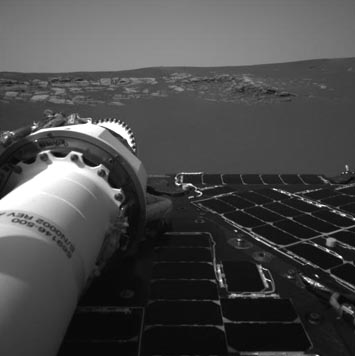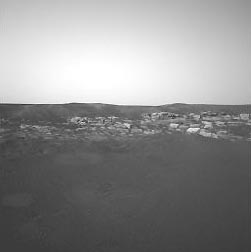"I will attempt no science analysis, because it looks like nothing I've ever seen before. I've got no words for this. I am flabbergasted. I am astonished. I am blown away. Opportunity has touched down in a bizarre alien landscape."
- Steven Squyres, Principal Investigator, Cornell University


January 25, 2004 Pasadena, California - Opportunity, NASA's second rover, landed on Mars five minutes after 9 p.m. in California and after midnight on the East Coast as expected. Opportunity bounced down in its airbag-covered lander on to a smooth plane called Meridiani Planum near the equator half way around Mars from the Gusev crater where the first damaged rover, Spirit, landed on January 3, 2004. Opportunity's mission is to search for signs of water and its landing marks and the soil look even muddier than the Gusev crater's.
Click here to subscribe and get instant access to read this report.
Click here to check your existing subscription status.
Existing members, login below:
© 1998 - 2024 by Linda Moulton Howe.
All Rights Reserved.

